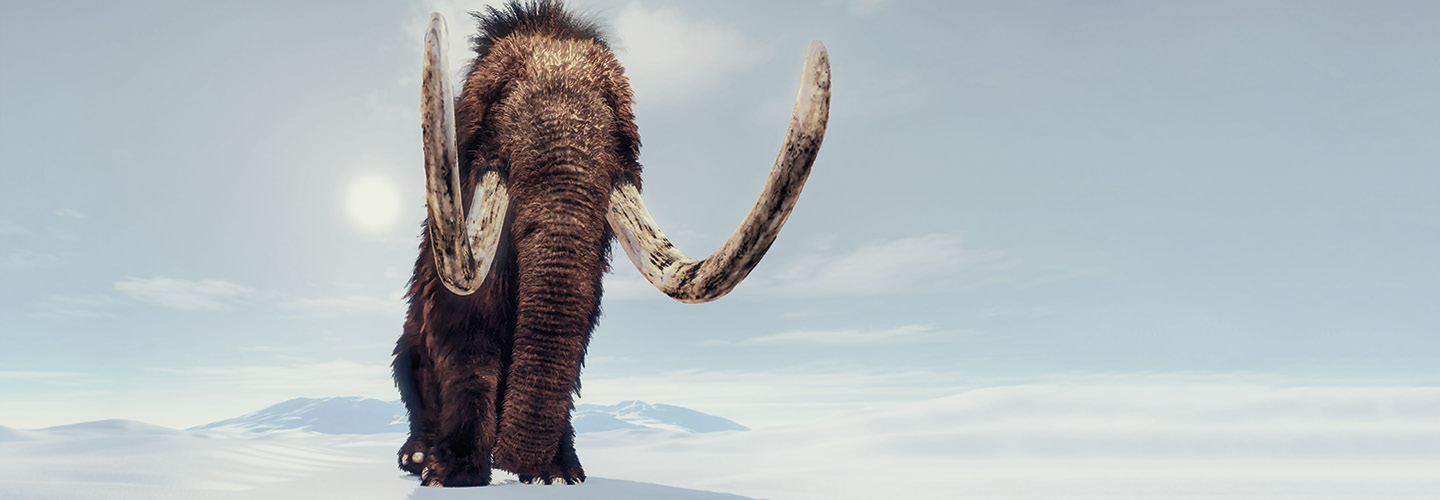Bringing back an animal from the dead may sound like the plot of a movie thriller. But in September, a team of scientists and entrepreneurs announced that they’ve started a new company to do just that, beginning with the woolly mammoth, which went extinct 4,000 years ago.
The Dallas-based company, Colossal, aims to place thousands of the gigantic elephant-like beasts back on the Siberian tundra where they once roamed. The scientists will edit the DNA of modern Asian elephants, adding genes for mammoth traits such as the distinctive high-domed skull and the dense hair and thick fat that helped the creatures withstand extreme cold.
The scientists don’t plan on giving the new species tusks, however, to prevent it from being targeted by poachers.
Colossal’s researchers hope to produce embryos of these mammoth-like elephants in a few years, with the ultimate plan of creating entire populations of “mammophants” similar in size to the extinct species. The company recently received $75 million in private funding, taking the scientists a big step closer to their goal.
“This is a major milestone for us,” says George Church, a biologist at Harvard Medical School, who for eight years has been leading a small team of researchers developing the tools for reviving mammoths. “It’s going to make all the difference in the world.”
Some scientists doubt that Colossal will succeed. And even if the company manages to produce baby mammoth-like creatures, it will face serious ethical questions: Is it humane to try to reproduce an animal whose biology we know so little about? Who gets to decide whether they can be set loose, with the potential to change the ecosystems they would inhabit? Will they have the tools to thrive as they once did?
“If they succeed, what will the needs be of an intelligent social creature?” asks Victoria Herridge, a paleontologist at the United Kingdom’s Natural History Museum who studies Asian elephants. “And what are our obligations to it?”
Bringing back an animal from the dead may sound like the plot of a thriller movie. But in September, a team of scientists and entrepreneurs said that they’ve started a new company to do just that. They plan to begin with the woolly mammoth, which went extinct 4,000 years ago.
The Dallas-based company is named Colossal. It aims to put thousands of the gigantic elephant-like beasts back on the Siberian tundra where they once roamed. The scientists will start with the DNA of modern Asian elephants. They’ll add genes for mammoth traits, including the unique high-domed skull and the dense hair and thick fat that helped the creatures endure extreme cold.
The scientists don’t plan to give the new species tusks. It’s a choice they’re making to prevent poachers from targeting the animals.
Colossal’s researchers hope to produce embryos of these mammoth-like elephants in a few years. In the end, they plan to create entire populations of “mammophants” similar in size to the extinct species. The company recently received $75 million in private funding. These funds have taken the scientists a big step closer to their goal.
“This is a major milestone for us,” says George Church, a biologist at Harvard Medical School, who for eight years has been leading a small team of researchers developing the tools for reviving mammoths. “It’s going to make all the difference in the world.”
Some scientists doubt that Colossal will succeed. And even if the company manages to produce baby mammoth-like creatures, it will face serious ethical questions. Is it humane to try to reproduce an animal whose biology we know so little about? How might they change the ecosystems they would inhabit? Who gets to decide whether they can be set loose? Will they have the tools to thrive as they once did?
“If they succeed, what will the needs be of an intelligent social creature?” asks Victoria Herridge, a paleontologist at the United Kingdom’s Natural History Museum who studies Asian elephants. “And what are our obligations to it?”

